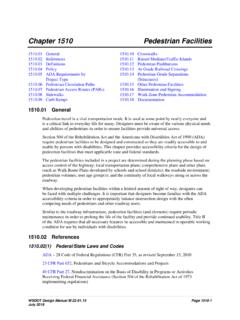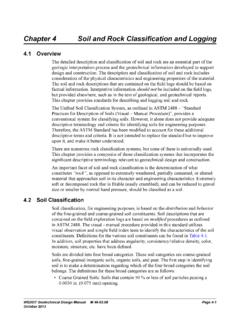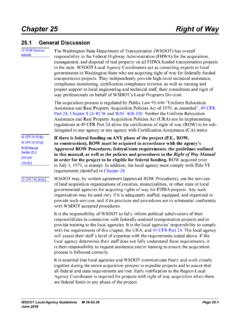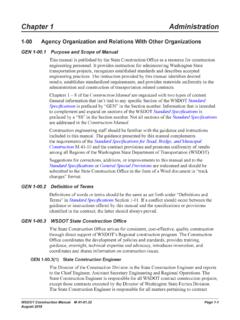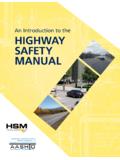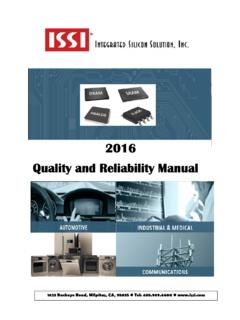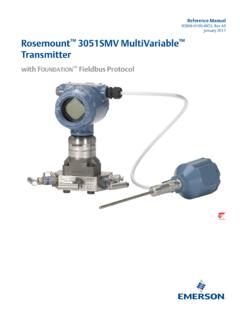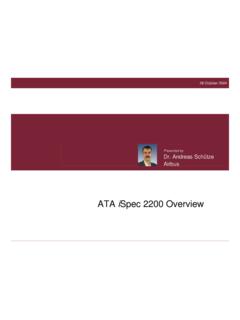Transcription of Chapter 320 Traffic Analysis
1 WSDOT Design manual M Page 320-1 November 2015 Chapter 320 Traffic Analysis General Design Year and Forecasting Considerations Traffic Analysis Software Travel Demand Forecasting Traffic Impact Analysis (TIA) TIA Scope TIA Methods and Assumptions Document TIA Methodologies TIA Mitigation Measures TIA Report References General This Chapter is intended to address policy-related issues associated with Washington State Department of Transportation (WSDOT) multimodal Traffic Analysis . It is not intended to address the specifics of demand forecasting; mesoscopic, analytical/deterministic, stochastic microsimulation; or safety performance analyses. For those items, see the latest versions of the Highway Capacity manual , Traffic Analysis Procedures manual (TAPM), and Highway Safety manual (HSM). Traffic Analysis is intended to produce information for decision makers; it is not intended as a stand-alone tool for making decisions.
2 Consideration of empirical data, similar Traffic situations, studies, local knowledge, and seasoned Traffic engineering and planning experience can also add to a pool of Traffic information that is provided to decision makers. Traffic Analysis is either operational or planning in nature. Operational Analysis is associated with engineering concepts focusing on near-term or existing/opening year, while planning analyses are generally focused on a horizon year or interim phase years. Planning-level analyses are also used to determine impacts for environmental documentation phases of Environmental Assessment (EA) or Environmental Impact Statement (EIS) work. Much caution should be used when operational tools are used with planning-level future year projection data. Be aware that operational models were not primarily intended for use with planning-level future year projected volumes, but there is a need to understand the difference between proposed future scenarios.
3 Therefore, operational models need to use data from forecasting models, but analysts need to do so with an understanding of the imperfections. Forecasting demand volumes 20 years into the future can be difficult to do well, so there should be little expectation that intersection turning movement projection-related Traffic analyses by themselves will be sufficient to produce actionable designs. Consequently, some future year Measures of Effectiveness (MOEs) such as turn lane queue length should not be considered accurate, but they may be useful when comparing various scenarios if the reported differences are substantial. Traffic Analysis Chapter 320 WSDOT Design manual M Page 320-2 July 2018 With the aforementioned limitations, project-specific Traffic volumes, forecasts, and system capacities are used to establish the extent of improvements needed for facilities to operate acceptably from year of opening or through interim phases and, eventually, through to the horizon year; for example: Number of general purpose/HOV/HOT lanes Length and number of ramp or auxiliary lanes Intersection or interchange spacing Channelization Signal timing Right of way needs Roundabout design parameters Width of sidewalks Extent of bike lanes Ferry holding lanes Traffic Analysis should examine multimodal access, mobility, and safety objectives; project benefits and costs; development impacts; and mitigation needs.
4 Not all projects will require the same level of effort. The specific depth and complexity of a Traffic Analysis will depend on a variety of factors, including: Project proponents (federal, tribal, state, local, and private sector) Legal requirements (laws, regulations, procedures, and contractual obligations) Lead agency Purpose or scope of the Traffic Analysis Data availability Time of day (am/pm peak hour or other) Funding ROW availability For projects that fall under FHWA approval, coordinate with the Headquarters (HQ) Traffic Office for concurrence on Traffic Analysis details. Other projects can be coordinated through region Traffic offices. (See Chapter 300 for FHWA oversight and approval policy.) Design Year and Forecasting Considerations Project evaluation requirements can be (1) focused on near-term functionality, (2) contain interim phases, and/or (3) require a long-term focus.
5 The project proponent can be the state (WSDOT or other state agencies) or developers (other public agencies or private concerns). For Access Revision Reports (AARs) , the design year and multimodal travel demand forecasting methodologies are to be documented by the project stakeholders in the Methods and Assumptions (M&A) Documents. Guidance on the horizon year and interim design year(s) for projects is given in Chapter 1103, Design 320 Traffic Analysis WSDOT Design manual M Page 320-3 November 2015 When selecting horizon year and interim design year phases, stakeholders need to consider the regional significance of a proposed project, how it functions within the existing system, and the expected lifespan. The Traffic Analysis for developer-related projects will typically focus on existing conditions and the build-out year of the proposed project.
6 Some larger developer projects will need to be evaluated in multiple phases, as they have the potential to significantly impact the transportation system and will thus require a longer-term focus. Mitigation measures may also be phased with these projects. Project teams are encouraged to consider the strategic importance, economic potential, network constraints, and investment scale when determining the Analysis methodologies for project phasing, design year, and forecasts. With acceptance/concurrence by the Traffic Office of purview,1 the following are possible approaches to be used individually or in concert to develop future year demand volumes: Travel demand models Trend line projections Cumulative impacts Limitations of the surrounding network Traffic Analysis Software With acceptance by the Traffic Office of purview, use the least complex and data-intensive software deemed reasonable for any given project.
7 Agreement for software and versions must be documented in the study s M&A. Use the latest version sanctioned by WSDOT HQ Traffic . For near-term Analysis of locations that do not require an understanding of interactions between various transportation systems, Sidra, Rodel, Synchro, and HCS are the primary analytical tools. For systemwide multimodal complex forecasting, EMME3, TransCad, and Visum are the primary tools. For choosing between scenarios involving multimodal Traffic and/or where various transportation system elements interact, CORSIM, Vissim, or Dynameq are the primary tools. The software mentioned above may have version limitations due to WSDOT purchased rights and contract limitations. For details about these and other Traffic Analysis software used by WSDOT, see the Traffic Analysis Procedures manual or contact the region or HQ Traffic Office.
8 Travel Demand Forecasting Designers, planners, and analysts need to be aware of the practical limitations of the selected method of multimodal Traffic demand forecasting and should consider the impact of demand uncertainty when conducting analyses and drawing conclusions from those analyses. Special attention should be given to any post-processing efforts. For guidance in the selection of Analysis methodology, refer to the Traffic Analysis Procedures manual . Following are brief descriptions of the four main methods for demand forecasting. 1 See Chapter 300 and the Federal-Aid Highway Program Stewardship and Oversight Agreement: Generally, region for non-Highways of Statewide Significance (HSS) or non-National Highway System (NHS), and Headquarters for HSS and NHS.
9 Traffic Analysis Chapter 320 WSDOT Design manual M Page 320-4 July 2018 (1) Travel Demand Models For the vast majority of projects, this will be the proper approach for developing future year demand volumes. However, caution should be taken when using this approach to draw conclusions from operational model Measures of Effectiveness (MOEs) that are based on such forecasts, because specific and accurate turning movement volumes are needed to produce credible MOEs. Forecast models are most commonly used to produce general volumes that can help Traffic planners evaluate and compare the relative merits of potential solutions against each other. (2) Trend Line Projections Where travel demand models are not established or are otherwise considered inadequate, trend data can be used but must be constrained by system flow limitations.
10 Trend line growth cannot account for peak spreading when Traffic demand exceeds system supply. Use with caution and consult the HQ Transportation Data & GIS Office (TDGO) for further details about this method and any inherent limitations. (3) Cumulative Impacts This method is typically used to forecast volumes in areas that demonstrate uniform growth and exhibit only minor changes and marginal impacts to the region. It is also useful for analyzing growth in suburban areas that are experiencing rapid development, as other methods may not be as reliable. The basic concept is to add volumes for developments to the trending background Traffic growth. The comprehensive plan for such areas should be consistent with the expected growth predicted by a project (and include other anticipated projects) in order to result in a reasonable estimate of cumulative impacts.


